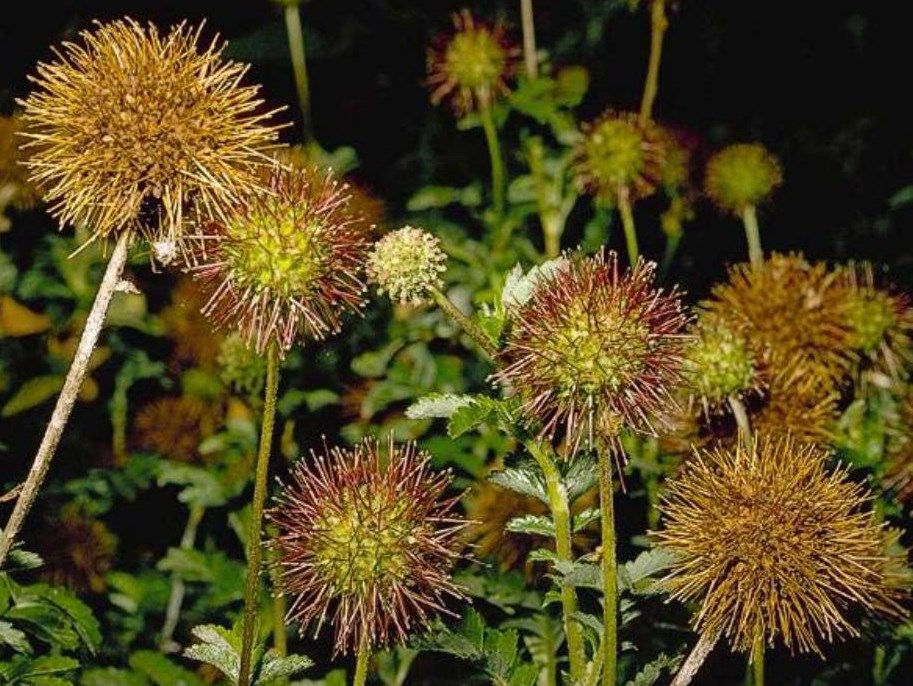Created by: Elizabeth D. Brusati
Created on: Thursday, Jan 21st, 2016
Created on: Thursday, Jan 21st, 2016
Yes or No:
Yes
Points:
1
Confidence Level:
Very High
Answer / Justification:
California and Oregon and Ireland. GBIF map also shows locations in Great Britain and Papua New Guinea (http://www.gbif.org/species/5370755).
Reference(s):
Yes or No:
Yes
Points:
2
Confidence Level:
Very High
Answer / Justification:
Naturalized in 10 counties in California.
Reference(s):
Yes or No:
Yes
Points:
2
Confidence Level:
Very High
Answer / Justification:
Listed on California and Oregon noxious weed lists. In SW Oregon, it is invasive in open, disturbed sites such as dunes and grassy areas. Competes with native plants on coastal bluffs where it forms dense mats.
Reference(s):
Yes or No:
Yes
Points:
3
Confidence Level:
High
Answer / Justification:
In SW Oregon, it is invasive in open, disturbed sites such as dunes and grassy areas. Competes with native plants on coastal bluffs where it forms dense mats. Can't find other information specifically calling it invasive. Personal communication from Steve Schoenig, formerly of the CDFA noxious weed program, that it was added to California's noxious weed list due to impacts on the sheep industry because burrs stick in wool and make it unsellable. I couldn't find other information to confirm this.
Reference(s):
Yes or No:
No
Points:
0
Confidence Level:
Medium
Answer / Justification:
Acaena agnipila listed as environmental weed in Global Compendium. Pg. 77 - Somewhere in NZ? Other spp listed as naturalized but not specifically invasive. Answering No because most of New Zealand does not match California based on Cal-IPC's climate map and New Zealand is the native range according to USDA.
Reference(s):
Yes or No:
No
Points:
0
Confidence Level:
Medium
Answer / Justification:
Native to Australia (Tasmania, New South Wales, Queensland, South Australia, Victoria) and New Zealand. Naturalized in California, two counties in SW Oregon, Ireland, Great Britain, and Papua New Guinea. Based on GBIF's map and Cal-IPC's climate map, the areas in Australia and some of New Zealand match California well, as does Oregon. Britain, Ireland, Papua New Guinea and the rest of New Zealand does not. Answering no because I don't think it qualifies as predominantly; it's about equal.
Reference(s):
Yes or No:
Yes
Points:
1
Confidence Level:
High
Answer / Justification:
Plants grow clustered together forming large mats where individuals are indistinguishable. In SW OR, competes with native plants on coastal bluffs.
Reference(s):
Yes or No:
No
Points:
0
Confidence Level:
High
Answer / Justification:
No mention of this and it prefers moist habitats such as near the coast, so seems unlikely.
Reference(s):
Yes or No:
No
Points:
0
Confidence Level:
High
Answer / Justification:
This genus is not listed in the FDA Poisonous Plants Database.
Reference(s):
Yes or No:
No
Points:
0
Confidence Level:
High
Answer / Justification:
Low-growing species that is less than one foot tall, so this seems unlikely
Reference(s):
Yes or No:
Yes
Points:
1
Confidence Level:
High
Answer / Justification:
Woody stolons root at nodes
Reference(s):
Yes or No:
Yes
Points:
1
Confidence Level:
Medium
Answer / Justification:
Individual plants also spread through clonal growth and can reproduce vegetatively if rooted stolons are separated from the parent plant by mechanical damage (Gynn and Richards 1985). Spread may also occur from the trade of the species as an ornamental (Risk Assessment for Great Britain).
Reference(s):
Yes or No:
Yes
Points:
1
Confidence Level:
High
Answer / Justification:
reproduction by seed
Reference(s):
Yes or No:
Yes
Points:
1
Confidence Level:
Very High
Answer / Justification:
One large plant can produce hundreds of seed heads with 70-100 seeds per head, so extrapolating that to more than 1000/plant.
Reference(s):
Yes or No:
Yes
Points:
1
Confidence Level:
Medium
Answer / Justification:
Yes based on the fact that there is no indication that the plant has a dormancy period or requires a process such as scarification to germinate.
Reference(s):
Yes or No:
Yes
Points:
1
Confidence Level:
Medium
Answer / Justification:
Assuming yes based on the fact that it's a fairly small herbaceous plant
Reference(s):
Yes or No:
Yes
Points:
1
Confidence Level:
Medium
Answer / Justification:
Flowers February-September in California so assuming seeds are produced in that period as well.
Reference(s):
Yes or No:
Yes
Points:
1
Confidence Level:
Very High
Answer / Justification:
Clinging burs have the potential to be transported by animals or humans
Reference(s):
Yes or No:
No
Points:
0
Confidence Level:
High
Answer / Justification:
Most fruits do not disperse far from parent plant.
Reference(s):
Yes or No:
Yes
Points:
1
Confidence Level:
High
Answer / Justification:
Clinging burs could attach to clothing. It is believed to have reached Oregon as a contaminant in wool.
Reference(s):
Reviewed by Steve Schoenig, CA Dept of Fish and Wildlife (retired) and Gina Darin (CA Dept. of Water Resources)
- < 13 : accept (low risk of invasiveness)
- 13 - 15 : evaluate further
- > 15 : reject (high risk of invasiveness)
PRE Score:
18
Number of questions answered:
20
Screener Confidence (%):
79.0
Organization:
Evaluation visibility:
Public - accessible to all site users

